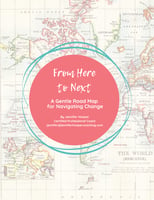Trauma comes from a heightened negative emotional experience, either a one-time event or a period...
How we filter our experiences
It's because of how we each FILTER information.
Fun facts to consider:
- Every second, we receive 11 million bits of data through our 5 senses: Sight, Sound, Taste, Smell, and Touch.
- Our minds can’t process all of that that at once; we can only process 134 bits of data per second.
- Our unconscious mind deletes, distorts, and generalizes the rest of the 11 million bits of data to get to the 134.
How does our unconscious mind decide?
Through our FILTERS.
Our filters are based on our personal life experiences and attitudes. More specifically, our filters are based on our:- Language
- Memories
- Values and beliefs
- Life experiences
- Meta programs (how our brain is actually wired)
All of us have different filters
Based on the 134 bits of data we filter per second, our unconscious mind creates an "internal representation" (aka, a picture) of what’s going on around us. One person may filter an experience as "positive" while another might experience it as "negative."
Consider these two possibilities for driving by a car accident:
- One person drives by the accident and notices that there's not much damage to each car. They see the drivers standing on the side of the road next the medics. Their "internal representation" is that it was a minor fender bender and no one got hurt.
- Another person drives by the accident and notices several damaged cars and an ambulance. Their "internal representation" is that the accident was tragic and people died.
Same circumstances, different "internal representations" (pictures).
Our "internal representation" dictates our emotional state (how we feel)
In the first example, the observer felt grateful. Grateful is their emotional "state."
In the second example, the observer felt sad. Sad is their emotional "state."
Our state creates our physiology
Our physiology is reflected in our physical qualities and characteristics.
Examples: gripping a steering wheel, feeling anxiety inside your body, or having tears flow down your face. Other examples include feeling relaxed, calm, and clear-headed.
Our physiology drives our behavior
Our behavior is what we actually DO.
For example, we might go home and relay in the details of the tragic accident to 10 people and write a post about it on Facebook. Or, we might never think about the accident again and go on our merry way.
Our behavior creates our results
What we DO dictates what happens in our life.
If we repeat a tragic story over and over, we might perpetuate the anxiety and sadness. If we go on our merry way, we have the bandwidth to focus on things in our lives that are more important to us.
If you don't like your current results, clean up your filters
Sometimes it's hard to clean up our own filters without support, but it's not impossible. Here's a few tips on how you can get started. Ask yourself these questions:
- Is what I’m seeing true?
- How might I change the picture and experience things differently?
- Can I pick up/exchange different "bits" of data?
Let me know if you have any questions!
Warmly,
Jennifer
Want support in cleaning up your filters?

|
If you want new results in your life, but you need more support for cleaning up your filters (and more), consider a Personal Breakthrough. For more information, download your FREE Personal Breakthrough Guide. |




